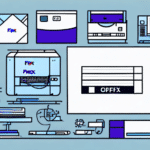Resetting Scales in UPS WorldShip: A Comprehensive Guide
Accurate weight measurements are crucial for efficient shipping operations. When using a scale with UPS WorldShip, you may encounter issues that disrupt your workflow, such as inaccurate weight readings or complete scale malfunctions. This guide provides an in-depth analysis of why and how to reset scales in UPS WorldShip, troubleshoot common problems, offer maintenance tips, and discuss hardware upgrades for enhanced performance.
Reasons to Reset Scales in UPS WorldShip
Several factors might necessitate resetting your scale in UPS WorldShip:
- Inaccurate Weight Measurements: Errors in weight can lead to incorrect shipping costs.
- Non-Responsive Scale: The scale may stop working entirely.
- Syncing Issues: Problems with the scale syncing data with UPS WorldShip.
- Software Recognition: UPS WorldShip may fail to recognize the connected scale.
- Configuration Changes: Alterations in scale settings that disrupt normal operations.
Resetting the scale often resolves these issues by clearing previous settings and allowing for a fresh configuration.
Troubleshooting Common Scale Issues
Before opting to reset your scale, it’s advisable to troubleshoot the issue. Here are common problems and their solutions:
- Scale Not Powering On:
- Check the power supply and ensure the scale is properly connected to the computer.
- Verify that the power outlet is functioning correctly.
- Incorrect Weight Readings:
- Ensure the scale is correctly calibrated.
- Review the settings in UPS WorldShip for accuracy.
- Consider recalibrating or resetting the scale if discrepancies persist.
- Software Synching Issues:
- Update the scale's drivers to the latest version.
- Confirm that the scale is selected and recognized in UPS WorldShip settings.
If weight readings continue to fluctuate or remain inconsistent, try placing the scale on a stable, level surface away from electronic interference. Persistent issues may indicate hardware malfunctions, necessitating a reset or replacement.
Step-by-Step Guide to Resetting Scales in UPS WorldShip
Follow these steps to reset your scale within UPS WorldShip:
- Disconnect the scale from the computer.
- Unplug the scale's power supply and wait for 30 seconds.
- Reconnect the power supply.
- Plug the scale back into the computer.
- Open UPS WorldShip.
- Navigate to the Options tab.
- Select the Scale section.
- Click the Detect button to identify the connected scale.
- If detected, set it as default by clicking Set as Default.
- If not detected, use the Find option to manually search for the scale.
- If detection fails, restart your computer and repeat the process.
If the scale remains undetected after these steps, contact UPS technical support or the scale manufacturer for further assistance.
Recalibrating Your Scale for Accurate Measurements
Recalibration ensures that your scale provides precise weight readings. Here’s how to recalibrate:
- Disconnect the scale from the computer.
- Place a known weight (e.g., a 5-pound dumbbell) on the scale.
- Press the tare button to reset the scale to zero.
- Reconnect the scale to the computer.
- Open UPS WorldShip.
- Go to the Options tab.
- Select the Scale section.
- Click on Calibrate Scale.
- Follow the on-screen instructions to complete the calibration.
Regular recalibration is recommended to maintain accuracy. For more detailed instructions, refer to the UPS calibration guidelines.
Tips for Maintaining Accurate Weight Measurements
To ensure consistent accuracy in weight measurements with UPS WorldShip, consider the following tips:
- Regular Cleaning: Keep the scale clean and free from debris.
- Stable Surface: Place the scale on a level and stable surface to avoid fluctuations.
- Routine Calibration: Calibrate regularly, especially after noticeable discrepancies.
- Correct Weight Units: Ensure the scale is set to the appropriate weight units (pounds, kilograms, ounces).
- Respect Weight Limits: Do not exceed the scale’s maximum weight capacity.
Additionally, account for packaging materials by weighing packages with all necessary components, such as boxes and padding. When shipping multiple items, weigh each individually to ensure an accurate total.
Avoiding Common Mistakes When Resetting Scales
To prevent issues during the reset process, avoid these common mistakes:
- Incomplete Disconnection: Always disconnect the scale from both the computer and power supply before resetting.
- Insufficient Power-Off Duration: Ensure the scale remains unplugged for at least 30 seconds to effectively reset.
- Skipping Steps: Follow the reset instructions meticulously without rushing.
- Concurrent Connections: Avoid resetting the scale while it’s connected to the computer.
Remember that resetting may erase calibration settings, so recalibrate the scale afterward to maintain measurement accuracy.
Upgrading Your Scale Hardware for Enhanced Performance
If resetting and recalibrating your scale do not resolve persistent issues, consider upgrading your hardware. Enhanced scales offer improved accuracy and additional features:
- Higher Capacity Scales: Ideal for businesses that regularly ship heavy packages, ensuring the scale can handle larger weights without compromising accuracy.
- Digital Scales: Provide more precise measurements compared to mechanical scales and often come with advanced features like digital displays and connectivity options.
- Bluetooth Scales: Enable wireless data transmission to your computer or mobile devices, streamlining the integration with UPS WorldShip.
Investing in higher-quality scales can reduce measurement errors, enhance operational efficiency, and ultimately save costs. For businesses with diverse shipping needs, consider scales that calculate dimensional weight to ensure accurate shipping fees.
Testing Your Scale After Resetting
After resetting, it’s essential to verify that your scale operates correctly:
- Weigh a known object to check if the scale displays the correct weight.
- Enter the weight into UPS WorldShip and confirm that it matches the scale’s reading.
- Repeat the process with objects of varying weights to ensure consistent accuracy.
Periodic testing and calibration help maintain the reliability of your scale. If discrepancies arise, re-evaluate the calibration process or seek technical support from UPS or the scale manufacturer.
For more detailed information and support, visit the UPS Help Center.




















